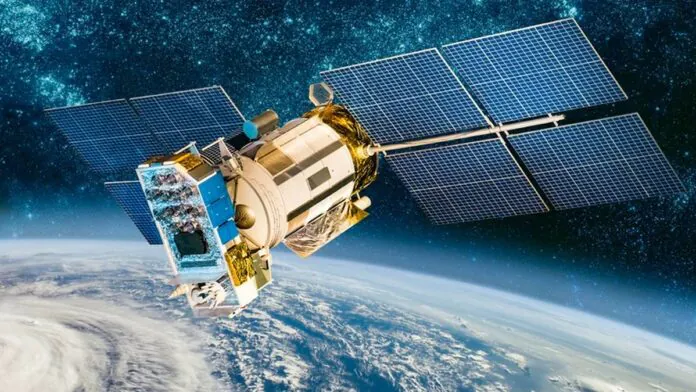© ROOT-NATION.com - Use of content is permitted with a backlink.
Solar storms are attracting more and more attention as the world’s dependence on satellites grows. Why? Because these storms can disrupt the satellites. For example, SpaceX lost 38 of the 49 Starlink satellites, launched in February 2022, due to a solar storm that hit the Earth’s atmosphere at about the same time. The event, which CNBC reportedly cost SpaceX about $ 50 million, showed how problematic solar storms can be.
Without satellites, life on Earth would be completely different. The world’s population depends on satellites on a daily basis. According to NASA, satellites are used for communications, electricity, oil and gas pipelines, air and sea traffic and navigation, GPS, weather and meteorological safety, agriculture, science and other government, civilian and military operations.

Solar storms, also called geomagnetic storms, occur when the Earth’s atmosphere and magnetosphere are affected by solar activity. Solar storms can be caused by solar flares, coronal mass emissions, high-speed solar winds, or solar particles. One such storm can last from several hours to several days, but its effects on the atmosphere can last for weeks. Strong, extreme solar activity can fall on our planet in just a few hours, leaving little time to prepare.
How solar storms destroy satellites
The NOAA explains that solar storms heat the ionosphere, upper atmosphere or thermosphere. This increase in temperature is caused by the “fall” of energy particles into the atmosphere. Heating of the atmosphere increases its density and increases the drag of satellites. In addition, charged particles and magnetic perturbations can disrupt key electronic equipment on satellites.
SpaceX reported that during the storm that caused the loss of Starlink satellites in February, the resistance increased by 50%. When the storm erupted, the SpaceX team initiated contingency procedures, put the satellites in safe mode, and ordered them to “fly over the edge” to reduce frontal resistance. In addition, the private company liaised with the 18th Space Force’s 18th Space Control Squadron, the government’s space security organization, and LeoLabs, a private commercial space radar surveillance service. Despite all efforts, the company has lost most of this batch of satellites.

Although SpaceX Starlink satellites are designed to escape safely from orbit, which means that they burn up when entering the atmosphere, not all satellites have this built-in feature. This makes disruptions to satellite services, re-entry into the atmosphere and space collisions a serious problem associated with solar storms. NASA adds that it is not just unmanned spacecraft and satellites that are at risk. Solar storms can also affect rocket launches and space operations, and high levels of radiation pose a health risk to astronauts.
You can also help Ukraine fight with Russian occupants via Savelife or via an official page of the National Bank of Ukraine.
Read also:
- Space presents yet another new phenomenon: ‘Micronova’ explosions on distant zombie stars
- Ukrainian space startup to develop equipment for military needs


